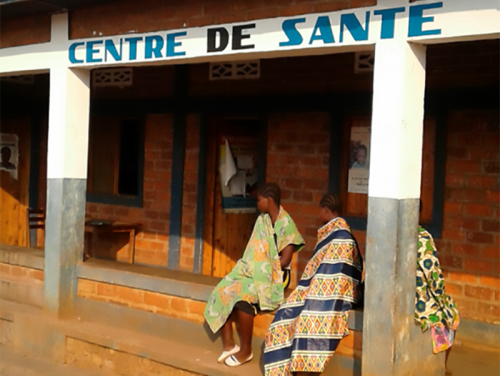Clinical Vignettes Provide Insights into Health Service Quality in the DRC

A research study conducted by IHSD researchers Janna Wisniewski, PhD David Hotchkiss, PhD and Paul Lusamba, PhD explored the quality of health services in the Democratic Republic of Congo (DRC) using clinical vignettes. A clinical vignette is a hypothetical scenario describing a typical visit from a patient. An iterative format is used to reveal case details and solicit health worker responses to open-ended questions.
As part of an evaluation of the USAID Integrated Health Program in the DRC, the team collected data from health facilities in six provinces in 2019, and an expanded sample of nine provinces in 2021. The survey method included a health worker module that was offered to all clinicians present at the health centers and a random sample of three health workers who provided general services to adults and children in hospitals.
In both survey waves, health workers who described themselves as regularly providing family planning services were administered a clinical vignette focused on a young, married women with no children who wanted to initiate a contraceptive method. The study found that only 41.9 percent of the health workers who provided family planning services would prescribe a method. Among those who would not prescribe a method, the most frequently cited reasons were that the woman is married, has no children, and that her husband is not present. The study suggested that training on gender issues and family planning, job satisfaction, provider attitudes toward their work, and provider age were associated with adherence to national guidelines.
In 2021, those who described themselves as regularly providing adult health services were administered a vignette about a patient with symptoms of COVID-19. Results from this vignette showed that 69.2 percent of the health workers correctly identified COVID-19 as a possible diagnosis. Moreover, 85.6 percent of the health workers would transfer a patient suspected to have COVID-19 to another facility, and 99.8 percent would notify a higher-level authority of a suspected case of COVID-19. The vignette showed that clinicians had a high level of awareness of COVID-19 and how to handle a suspected case, even in regions with few or no cases.
The researchers found that vignettes have some limitations, including vulnerability to social desirability bias and the fact that it measures hypothetical scenarios rather than what happens in practice. The study team recommended substantial expert advising and pretesting of the vignettes to ensure accurate data. Despite these limitations, clinical vignettes provide insights into health service quality, including whether guidelines are being followed, common misdiagnoses, helpful signs and symptoms for accurate diagnosis, and provider attitudes and biases.
